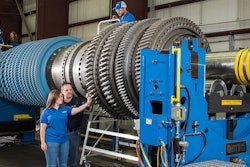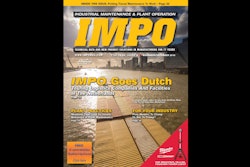Companies across industries often invest millions (if not billions) of dollars in capital equipment. That's because capital equipment is the backbone of business operations. For the best possible return on investment, this equipment must run at peak performance, with minimal downtime. This investment in capital equipment is shifting from a capital expenditure (CAPEX) approach to a services-first approach. This shifting model puts the responsibility on the equipment provider and ranges in the level of responsibility. From coupling purchase of equipment with the services to leverage manufacturer expertise, to more advanced approaches of not laying out huge sums of money but paying for the desired outcome. For instance, a hospital may decide not to purchase an MRI machine, but rather negotiate payment based on the number of MRI scans delivered. Either approach, or anything between, puts the equipment manufacturer in a position where service defines their product offering, and enables continued revenue. This increased value of service requires an increase in effectiveness while dramatically improving efficiencies. Adding real-time access to precise information about every asset is essential for operations teams and service personnel to deliver timely service.
Next generation service professionals will be equipped to anticipate service needs before there’s a problem. They will go from providing reactive service to offering proactive and situationally aware services for their capital equipment customers. As noted above, customers are even pushing providers in this direction, by placing the risk on the equipment manufacturer and enticing with financial reward linked to how well the equipment operates, or is operated. Enabling them to succeed in this world where service is inherently linked to the product, a dramatic change in the approach to service is required, and requires the right solutions fully integrated and always at their fingertips. Here are four ways technology can help transform your capital equipment operation and improve productivity and revenue:
Tip #1: Optimized Scheduling
Scheduling might be the most important facet of a capital equipment operation. This is due to the incredible costs and potential lost revenue associated with inefficient field service. With field service technology, all factors can be considered dynamically to ensure not only the right resource is sent at the right time with all the right tools and parts considering the most precise details, but that decisions are aligned with the desired business goals to increase efficiency, and effectiveness while balancing costs and revenue. With such tools, the historic approach to either generalize service or allow each individual service professional to decide is replaced with a precisely targeted policy so that an individualized approach is applied dynamically to both speed the necessary action taken as well as apply the appropriate logic and process in the specific context. This rapidly applied surgical approach ensures the details historically avoided to support speed of service and reduced complexity are now leveraged to derive ever increasing benefits.
Tip #2: Greater Access To Service History
Mobile workforce management solutions give service professionals access to the every asset’s details, including service history. Providing this level of detail in a digest form eases consumption and allows for increased efficiency and effectiveness of the field force. It also allows modern mobile workforce management solutions to make intelligent decisions, perhaps sending the same service professional that has proven effective in solving this or similar issues. Conversely, these systems ease the collection of service history details for the purpose of tracking asset behavior to support predictability while also allowing contextual distribution of these details to aid connected systems and future field force activity. This ability to automate the collection, digestion and distribution of details in the context of what is being worked on, for what purpose, and in which stage of the process, feeds the service business with the ammunition needed to be effective and efficient in what they do, but also allow the solution to automatically learn and continually improve.
Tip #3: Real-Time Personal Assistance
Most field service solutions have personal assistant features for prompting users through the desired process. More effective approaches go beyond this, delivering details in the context of where the user is in the stage of the individualized process and offering up options for selection to help ease user efforts. These solutions are aware of what is and should be happening, and where. Driving within a threshold distance of the job site can automate the adjustment of work status as well as presenting only the details needed for that stage in the process, even prompting the user with updated options. The result includes improved adherence to process and greatly easing user efforts along with required training to use such solutions. Additionally, the automation of collecting desired details with minimal user effort aids in feeding the level of precision that drives ever increased operational awareness and benefits. This also immediately increases efficiency, which means more successfully completed jobs in a shorter amount of time.
Tip #4: Increased Revenue Generation
Aberdeen Group research shows that field service generates 25 to 40 percent of total revenue in most capital equipment manufacturing companies. So, for a company that profits $100 million, field service solutions generate nearly $40 million of that revenue. Aberdeen’s research also shows that nearly half of service organizations report profit margins from field service that are 10.7 percent higher than margins on the products their companies sell. This awareness is changing the approach in many capital equipment providers. Customers are aiding this shift toward a field service centric approach to engaging manufacturers. Their approach has been rapidly moving toward a services model of consumption, and the commercial approach to how manufacturers operate will result in a greater shift of revenues toward services. This further increases the need to prioritize operational excellence in field service as it becomes synonymous with the products delivered and essential to increasing profitability.
Today’s field service management solutions allow capital equipment manufacturers to break the historic paradigm of increasing operating cost to improve service levels. With the ability to increase the precision when producing and managing the range of activities performed by varied field resource types, while also increasing the speed and ability to take in and continually refine the approach, modern mobile field resource management systems open up the door to previously inaccessible benefits. This technology enables the next generation of field service operations to drive down costs, tap into benefits and continually improve customer experience.
The numbers don’t lie. Field service management technology is transforming the capital equipment industry. And manufacturers will need to shift their approach to service to address shifting customer expectations, while managing costs to grow their service revenues and reap increasing profitability.
Steve Smith is vice president, strategic solutions, at ClickSoftware.























